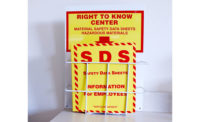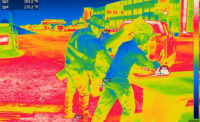High-risk ops require knowledge & skills
Training fuels safety

On January 22, 2018, a rig explosion near Quinton, Oklahoma claimed the lives of five workers, marking the deadliest incident in the U.S. oil and gas industry since the Deepwater Horizon disaster. In light of the continued growth in U.S. production, these incidents and many others are tragic reminders of the extreme risks faced by workers in the oil and gas industry, and the continuing need for innovation in safety systems and technologies to keep pace with the needs of this growing workforce.
Trends in oil & gas fatalities
Between 2003 and 2014, the oil and gas extraction industry suffered 1,331 fatalities. This amounts to 25 deaths per 100,000 workers each year, a rate more than seven times the national average for all industries.
Transportation incidents were the most frequent cause, accounting for 41 percent of worker deaths. Contact with objects and equipment was the second most frequent cause at 26 percent. The third most common cause of fatalities was fires and explosions, which accounted for 14 percent and claimed the lives of 187 workers over the ten-year period.
Though less frequent than transportation or contact-related fatalities, deaths from fires and explosions are no less catastrophic. These incidents nearly always result in multiple fatalities and significant collateral losses including massive damage to equipment and other assets, large scale environmental releases and ecological contamination.
Well control
Initial assessments by the U.S. Chemical Safety Board (CSB) state that the Quinton explosion appears to have been caused by an uncontrolled release and subsequent ignition of flammable gasses from the wellbore.
At the time of the explosion, workers were removing the drill from the wellbore in order to replace a drill bit. Unless well control is carefully maintained during this process, there is high potential for a condition known as “swabbing” where the removal of the drill from the wellbore creates a suction force, lowering wellbore pressure and increasing the likelihood that a kick and potential blowout may occur.
Blowout preventers (BOPs) are designed to prevent these sudden and unexpected releases. However, as with any piece of machinery operated under such extreme conditions, failures can occur when BOPs and other well control systems are not properly tested and maintained, and when crews are not sufficiently trained in their operation.
Vapors & ignition sources
The risk for fires and explosions is certainly not limited to drilling and production activities. Several recent incidents have placed renewed emphasis on fire safety and prevention measures throughout every step of the upstream oil and gas supply chain.
One such incident occurred near Mead, Colorado in May, 2017. Workers were performing cutting and welding in order to merge the piping systems of two groups of storage tanks when a sudden explosion killed one worker and severely injured three others. OSHA investigation discovered that multiple safety standards were violated, and that workers lacked training on the introduction of potential ignition sources into the work area, isolation of flammable gases or vapors from welding activity, and adequate inspection of the work site to address safety hazards.
Fire & explosion prevention training
Due to the extreme and often unpredictable conditions in which oil and gas workers operate, many hazards they face cannot be easily eliminated. Hazard awareness and avoidance is often workers’ first and only line of defense. To that end, effective training is fundamental to building hazard awareness and providing workers with the knowledge and skills necessary to minimize risks.
Recognizing this, the Bureau of Safety and Environmental Enforcement (BSEE) requires that offshore operators establish formal training programs to ensure workers can perform assigned well control and production safety duties. Employers must periodically re-evaluate employee training needs, and maintain training documentation for a period of five years. BSEE may periodically evaluate your training program.
Onshore operators are responsible for compliance with the training provisions of multiple OSHA standards concerning the handling, use and production of flammable liquids and liquefied petroleum gases, as well as fire protection measures. Similar to BSEE requirements, OSHA training compliance is performance-based and workers must be able to demonstrate to an inspector that they can perform their duties in a safe manner.
Technology solutions for training
A major challenge faced by employers is the remote and mobile nature of oil and gas workers, as well as numerous contractors who frequently transition in and out of the jobsite. Tracking employee/contractor training status and managing the associated documentation, not to mention delivering training materials to a widely distributed workforce, often presents a logistical nightmare.
Today, cloud-based eLearning and training management software eliminates these challenges by making high-quality, interactive training materials available to workers anywhere, anytime. eLearning solutions are proven to increase training effectiveness compared to traditional classroom-based training, while accommodating workers’ rigorous schedules and diverse learning styles. For employers, training management software simplifies the scheduling, evaluation and documentation.
In addition to training management, EHS software can supplement your training program in a variety of ways. Many of today’s software solutions are platform-based, meaning they support a number of applications and task-based capabilities. Some are modular in design, which provides the ability to build a system based on your needs, rather than purchasing features and functionality that may never be used.
Considering the challenges of training a remote and mobile workforce, centralizing training management, risk analysis, MOC and other EHS processes within a single cloud-based EHS management software system offers the best, most cost-effective option to help you ensure the safety of your workers.
Looking for a reprint of this article?
From high-res PDFs to custom plaques, order your copy today!





